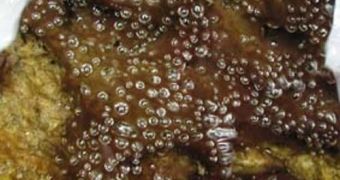A new scientific study, published in the March issue of the respected scientific journal Geology, proposes that the first organisms to colonize the lands on our planet may have had some help. The earliest microbe populations that lived in the world's water, alongside shore lines and elsewhere, could hypothetically not survive the cold, harsh, and lifeless climate of the land. Experts behind the new research propose that these microorganisms had some help in surviving on the land, and namely fat molecules known as wax esters. These may have helped the microbes endure without the risk of dying from dehydration, Wired reports.
“Production of [wax esters] may represent an adaptation to cross a critical evolutionary threshold, i.e. surviving dehydration and/or dessication cycles. This adaptation could have facilitated bacterial migration into the earliest lakes, and aided survival in terrestrial environments,” the experts write in the journal entry. The team was led by University of Tennessee-Knoxville biogeochemist David Finkelstein. He and other experts say that the first microbial life may have colonized the continents sometime before the last 500 million years. However, pinning down a more accurate date is impossible, given the fact that these organisms are not exactly known for producing fossils.
Studying the planet's most ancient animals is relatively easy, given that at least a small portion of them leave behind measurable remains, preserved in tar pits, or on the banks of prehistoric watering holes. These remains, including fossilized bones, teeth, and even patches of skin, help researchers data the exact period when they lived, with certain margins for error. But microbes leave nothing behind, and so determining their age is a matter of lucky guesses. Still, we should be grateful to these earliest pioneers of life for a simple reason – they seeded the barren lands with organic compounds, that would later lead to the development of what we now call soil.
In their experiments, the scientists in charge of the new investigation looked at the modern equivalent of ancient microorganism colonies, and namely at microbial mats. Such large-scale colonies exist still in seasonal lakes near Warner Valley, Oregon, or in the Yellowstone area, among other places. The team learned that colonies which had been desiccated tended to feature microbes that exhibited at least twice the normal concentration of wax esters than their brethren living in normal conditions. “It’s a really cool idea if it actually turns out in a concrete way that this is a way of waterproofing yourself and forestalling the loss of cellular water. The first microbial mass that colonized land sure would have needed some kind of adaptation like this to make it successful,” Finkelstein concludes.

 14 DAY TRIAL //
14 DAY TRIAL //